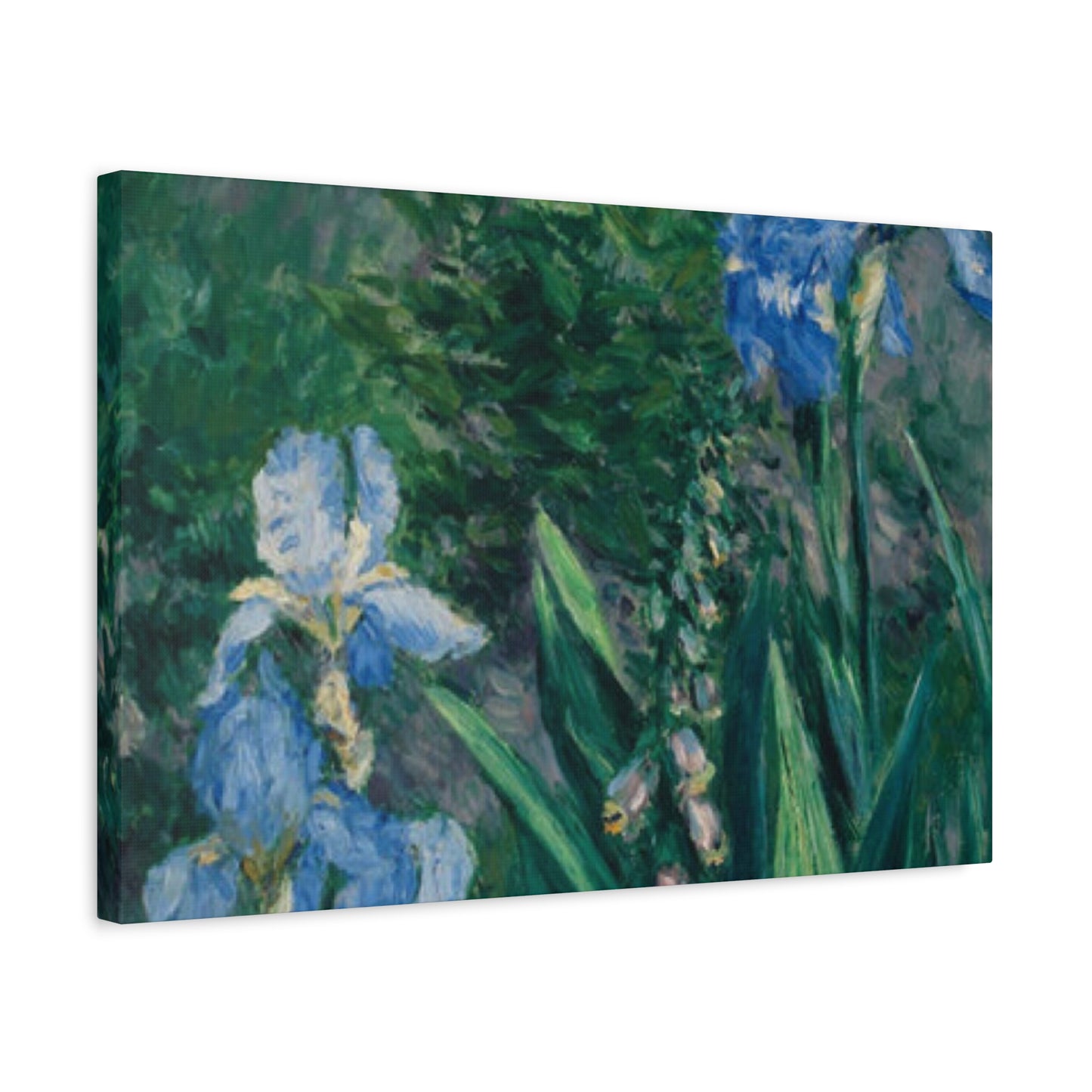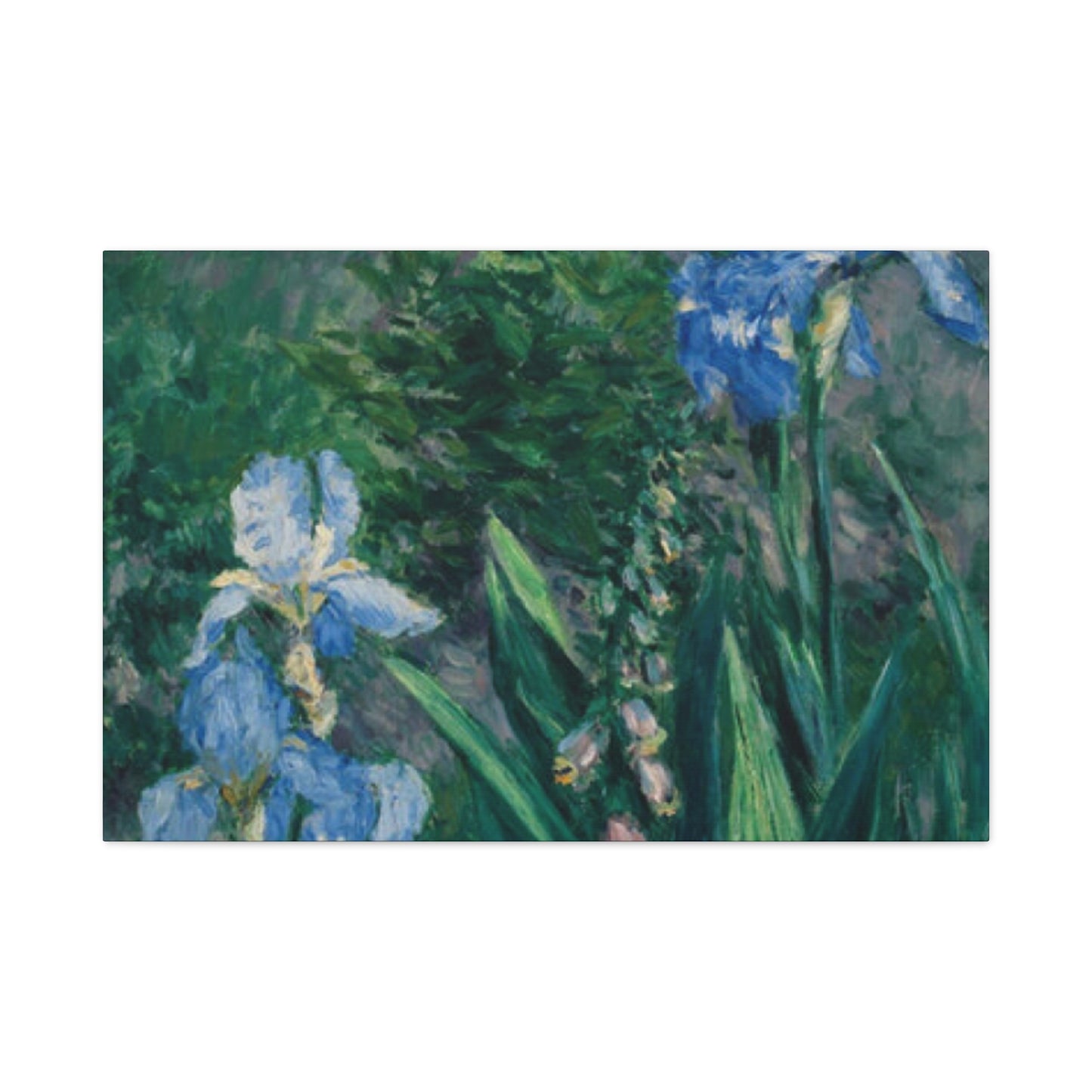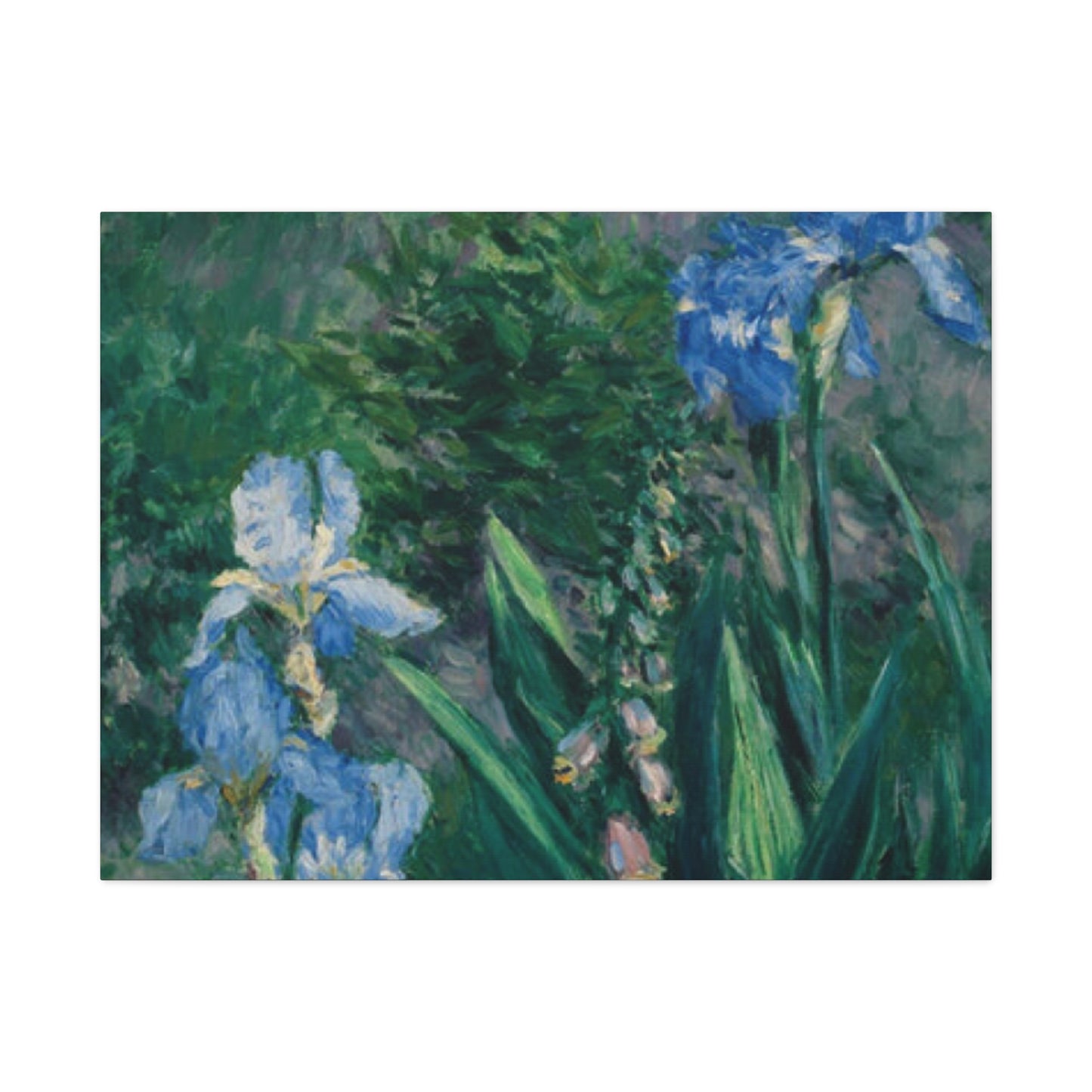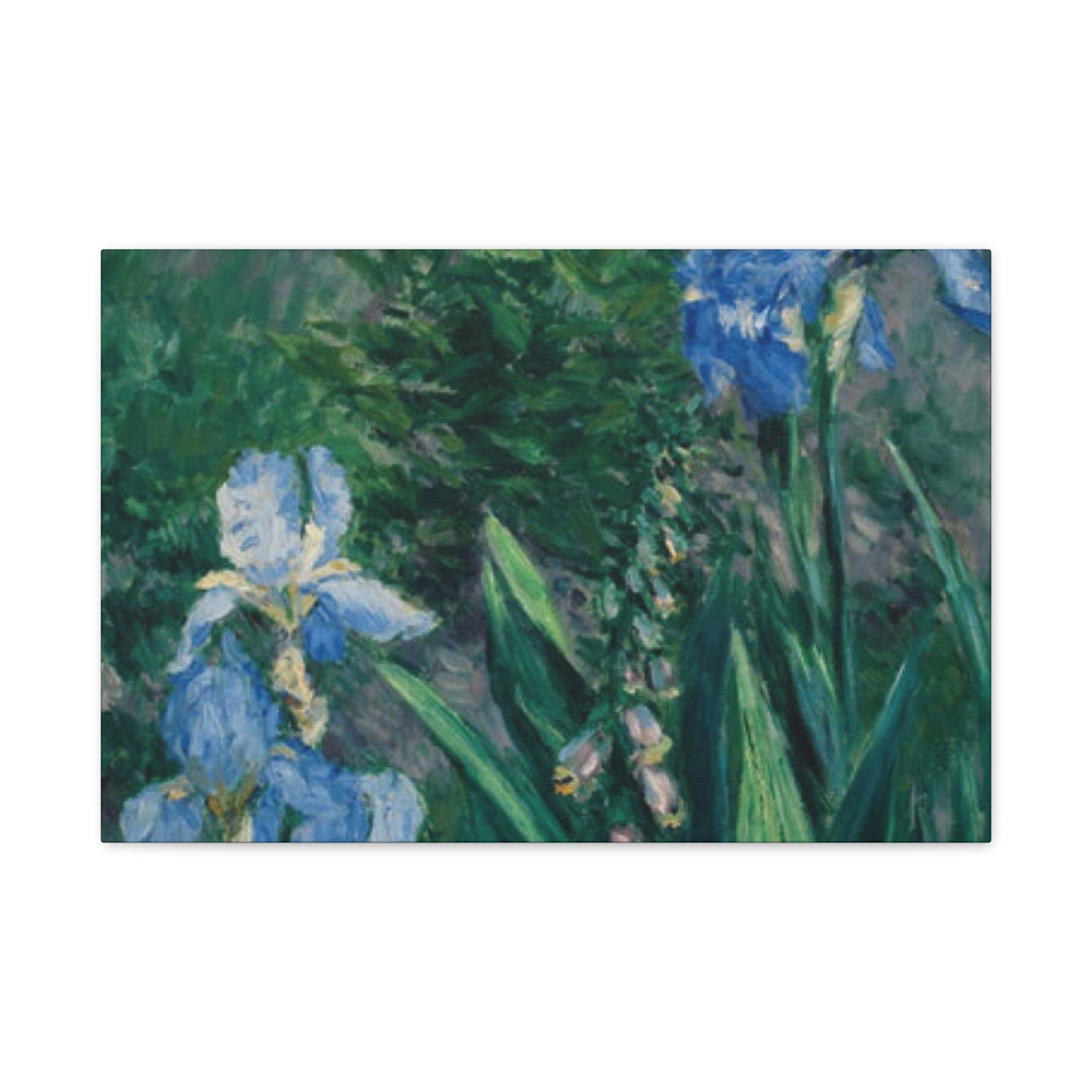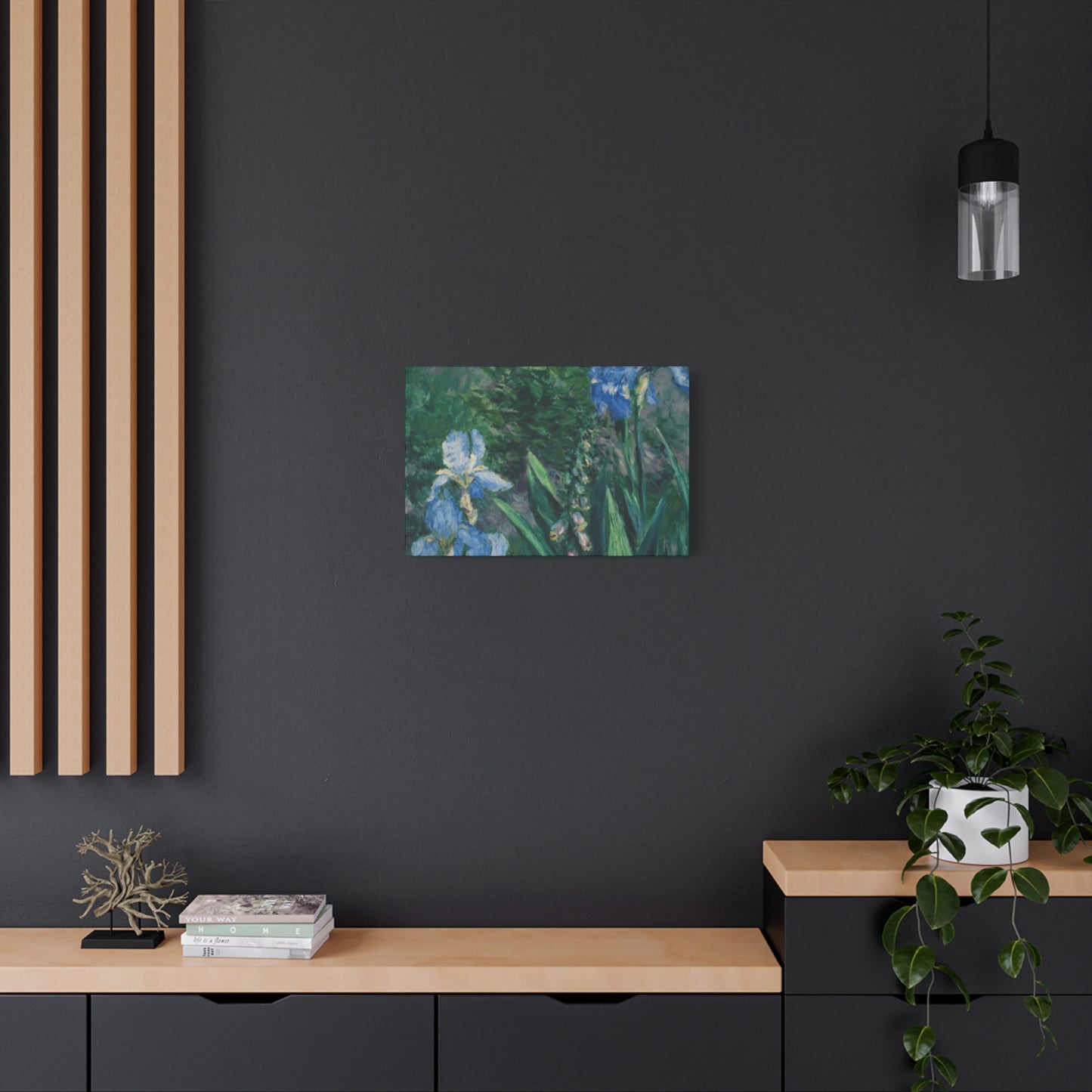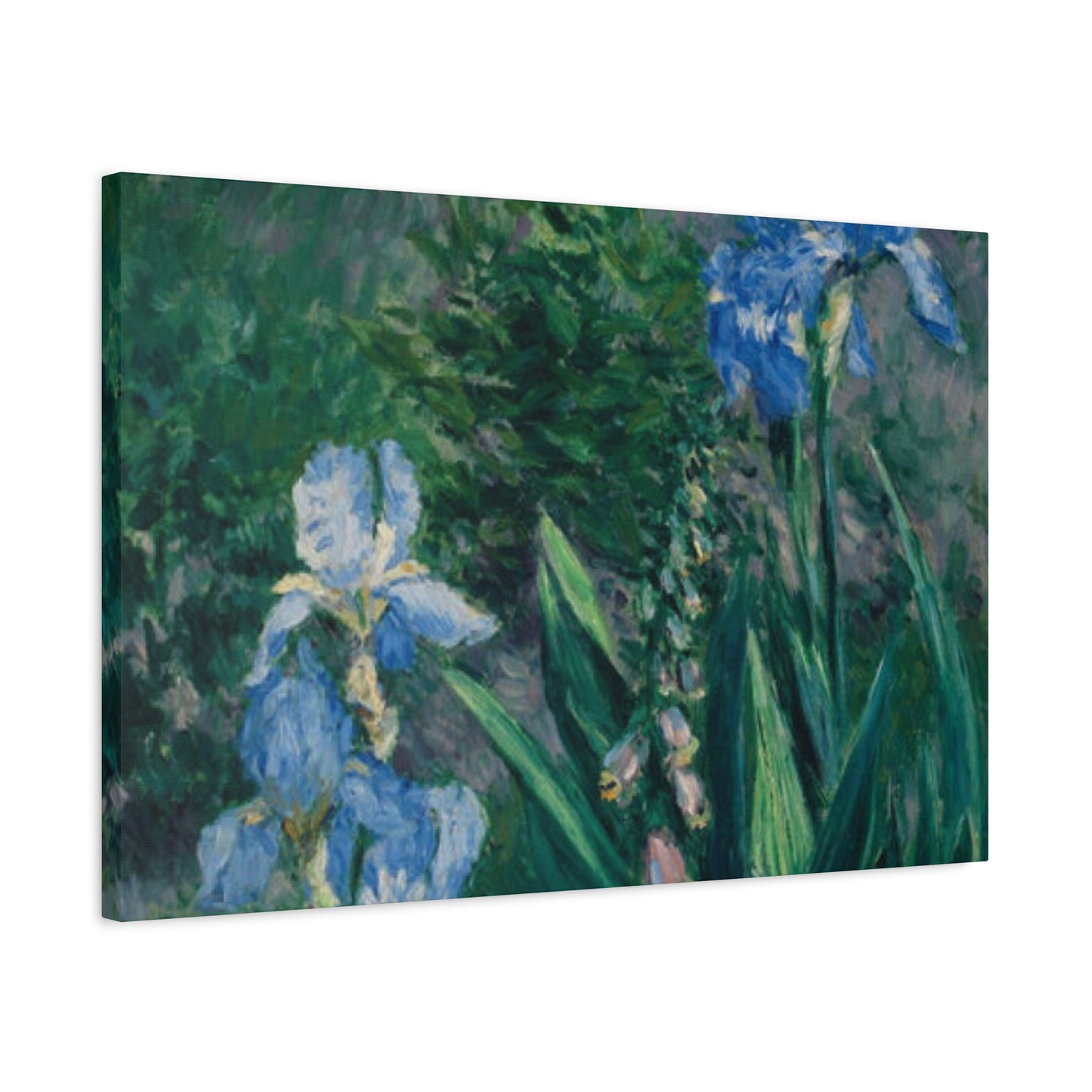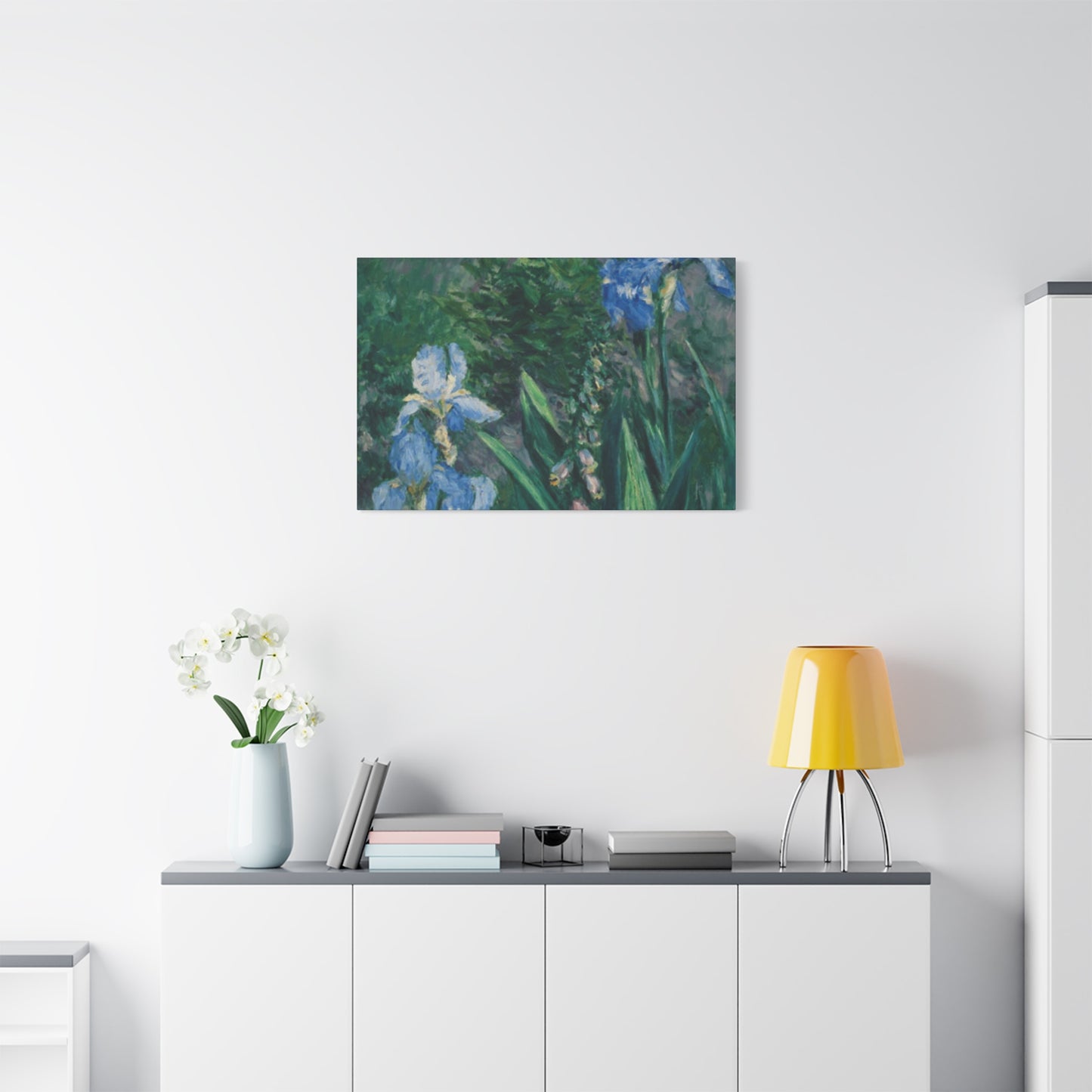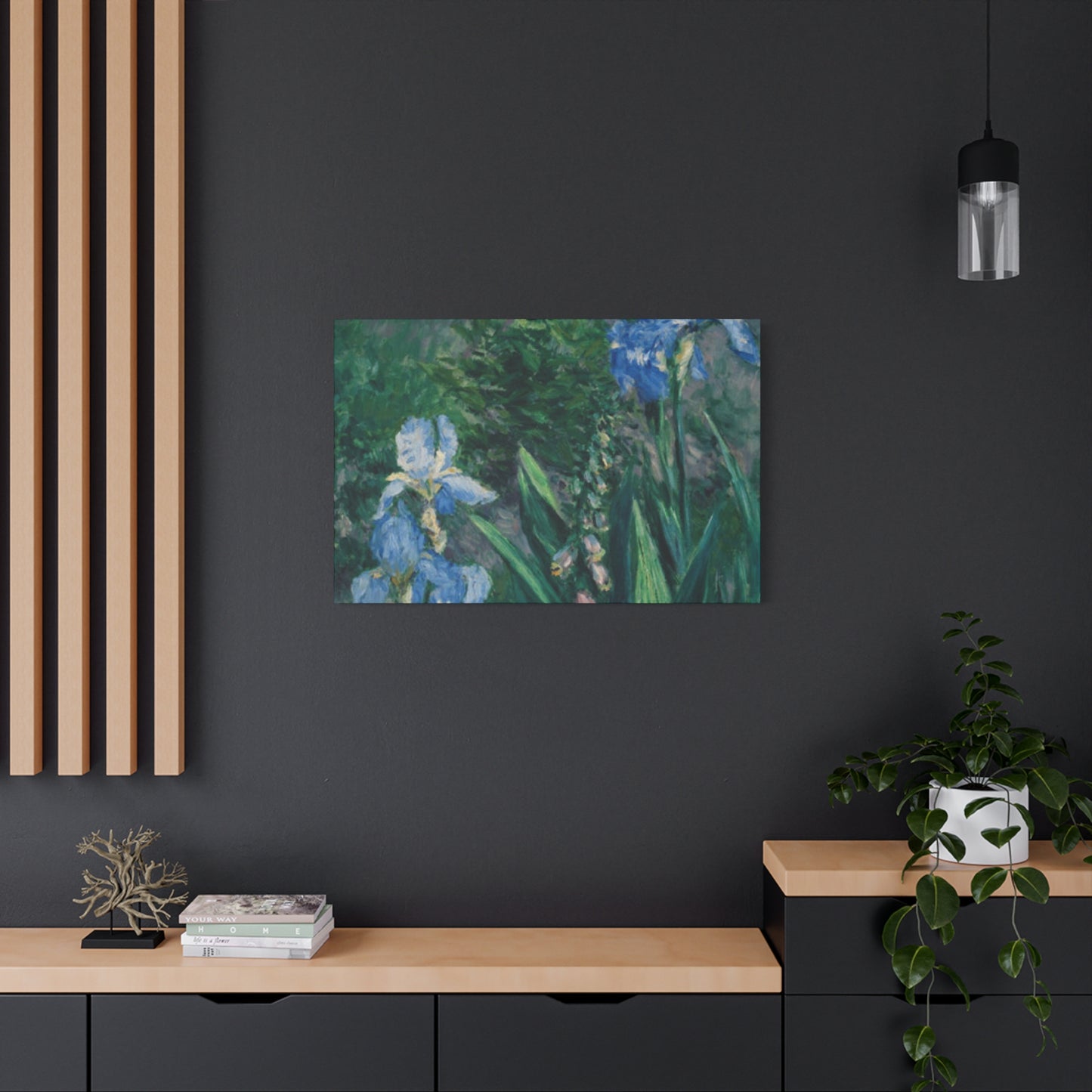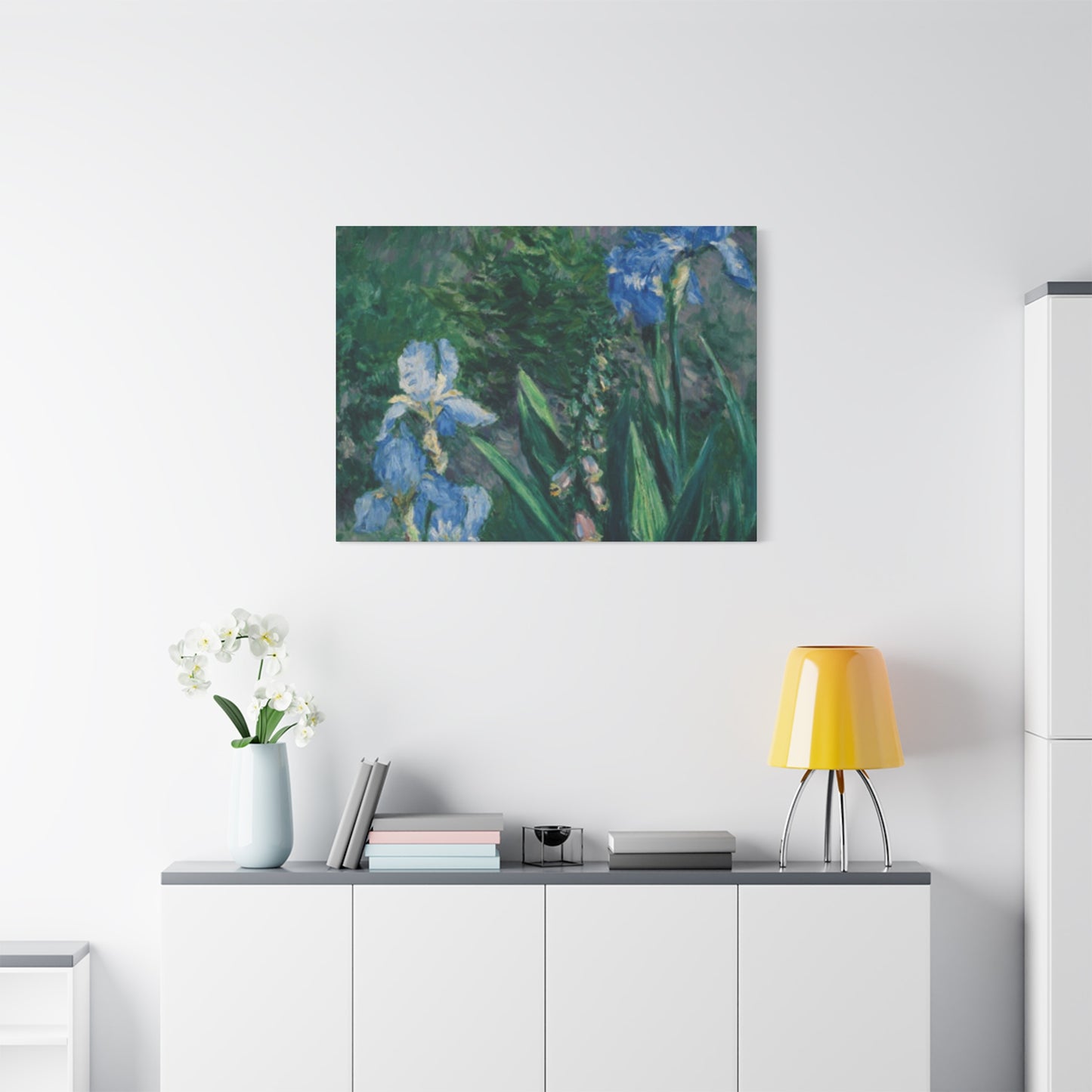Gustav's Nature Wall Art: Elevating Your Home with Breathtaking Natural Masterpieces
Gustav's extraordinary ability to capture the essence of the natural world through his artistic vision has made him one of the most celebrated painters of our time. His nature wall art pieces serve as windows into pristine landscapes, offering viewers an opportunity to connect with the beauty of the outdoors from within their own homes. Each brushstroke tells a story of seasonal changes, wildlife encounters, and the ever-changing moods of Mother Nature herself.
The artist's dedication to portraying authentic natural scenes stems from his deep-rooted appreciation for environmental preservation and his belief that art should serve as a bridge between humanity and the natural world. Through his extensive collection of nature-themed paintings, Gustav has created a body of work that not only decorates walls but also inspires contemplation, peace, and a renewed appreciation for the environment around us.
When selecting Gustav's nature wall art for your home, you're choosing more than just decorative pieces; you're investing in artwork that carries emotional depth, technical excellence, and a profound connection to the natural world. These paintings have the power to transform any room into a sanctuary of tranquility, where the stresses of modern life can be temporarily forgotten in favor of the timeless beauty of nature.
Capturing Nature's Beauty in Gustav's Paintings
Gustav's mastery in capturing nature's beauty lies in his meticulous attention to detail and his intuitive understanding of natural phenomena. His paintings showcase an incredible range of natural subjects, from towering mountain peaks shrouded in morning mist to intimate forest clearings where sunlight filters through ancient trees. Each piece demonstrates his ability to freeze moments in time, preserving the fleeting beauty of natural scenes that might otherwise be lost to memory.
The artist's approach to capturing nature involves extensive field studies, where he spends countless hours observing the subtle changes in light, color, and atmospheric conditions throughout different times of day. This dedication to authentic representation ensures that his wall art pieces carry the genuine essence of the locations they depict. His paintings often feature dynamic compositions that draw viewers into the scene, making them feel as though they are standing within the landscape itself.
One of Gustav's most remarkable talents is his ability to convey the sensory experience of being in nature through visual art alone. His paintings don't just show what nature looks like; they communicate how it feels to breathe the crisp mountain air, to hear the gentle rustling of leaves, or to witness the first rays of dawn breaking over a pristine lake. This multisensory approach to painting creates wall art that resonates on a deeply emotional level with viewers.
The technical precision required to achieve such realistic portrayals of natural scenes cannot be overstated. Gustav employs various painting techniques, including wet-on-wet blending for soft cloud formations, impasto for textured tree bark, and glazing for the luminous quality of water surfaces. These techniques, combined with his exceptional color theory knowledge, result in paintings that capture not just the appearance of nature but its very spirit.
His landscape compositions often follow the principles of classical art while incorporating contemporary elements that make them relevant to modern audiences. The careful balance of foreground, middle ground, and background elements creates depth and dimension that draws viewers deeper into each scene. This compositional mastery ensures that Gustav's nature wall art remains engaging even after extended viewing periods.
The diversity of natural subjects in Gustav's portfolio means that collectors can find pieces that resonate with their personal connection to nature. Whether someone is drawn to the rugged beauty of coastal scenes, the serenity of forest pathways, or the grandeur of mountain vistas, Gustav's collection offers wall art options that speak to individual preferences while maintaining consistent artistic quality throughout.
The Role of Nature in Gustav's Artistic Vision
Nature serves as the foundation of Gustav's entire artistic philosophy, influencing not only his choice of subjects but also his approach to color, composition, and emotional expression. His vision extends beyond mere landscape painting to encompass a deeper exploration of humanity's relationship with the natural world. Through his art, Gustav seeks to remind viewers of the profound beauty that surrounds us and the importance of preserving these natural treasures for future generations.
The artist's connection to nature began in childhood, when he spent summers exploring wilderness areas with his family. These formative experiences shaped his understanding of natural rhythms and seasonal changes, knowledge that would later inform his artistic practice. His intimate familiarity with various ecosystems allows him to paint with authority and authenticity, creating wall art that resonates with anyone who has experienced the wonder of untouched natural environments.
Gustav's artistic vision encompasses the full spectrum of natural environments, from dramatic wilderness scenes to subtle garden studies. This comprehensive approach ensures that his nature wall art can complement various home aesthetics and personal preferences. His paintings celebrate both the grand gestures of nature, such as thunderstorms and sunrise displays, and the quiet moments of natural beauty that often go unnoticed by casual observers.
The philosophical underpinnings of Gustav's work reflect his belief that art should serve as a catalyst for environmental awareness and appreciation. His paintings often subtly communicate messages about conservation and the fragility of natural ecosystems without resorting to heavy-handed environmental messaging. Instead, he allows the inherent beauty of his subjects to speak for itself, trusting that viewers will develop their own emotional connections to the natural world through their interaction with his art.
His artistic vision also incorporates elements of seasonality and temporal change, recognizing that nature is in constant flux. Many of his paintings capture transitional moments, such as the changing colors of autumn leaves or the first snowfall of winter. These temporal elements add layers of meaning to his work, reminding viewers of the cyclical nature of life and the importance of appreciating beauty in the present moment.
The role of light in Gustav's artistic vision cannot be overstated. He views light as the primary vehicle through which nature's beauty is revealed, and his paintings demonstrate a masterful understanding of how different lighting conditions can dramatically alter the mood and appearance of natural scenes. His wall art pieces showcase everything from the dramatic golden hour lighting that photographers prize to the subtle, diffused light of overcast days that reveals different aspects of natural beauty.
Gustav's vision extends to the emotional and psychological effects of nature on human well-being. His paintings are designed to evoke the same sense of peace, wonder, and rejuvenation that people experience when spending time in natural environments. This therapeutic aspect of his work makes his nature wall art particularly valuable for creating calming, restorative environments within homes and other private settings.
How Gustav Uses Color to Portray Natural Scenes
Gustav's sophisticated understanding of color theory enables him to create nature wall art that captures the full spectrum of natural beauty with remarkable accuracy and emotional impact. His color choices extend far beyond simple representation, incorporating subtle nuances and relationships that mirror the complex color interactions found in natural environments. Through careful observation and artistic interpretation, he translates the infinite variety of natural colors into paintings that feel both authentic and emotionally resonant.
The artist's approach to color begins with extensive studies of natural color relationships in different lighting conditions and seasonal contexts. He understands that the same tree might appear dozens of different colors throughout a single day, depending on atmospheric conditions, surrounding elements, and the quality of light hitting its surfaces. This knowledge allows him to make informed decisions about color choices that enhance the emotional impact of his wall art while maintaining visual authenticity.
In his forest scenes, Gustav employs a complex palette of greens that ranges from the bright, yellow-tinged greens of new spring growth to the deep, blue-tinged greens of mature evergreen needles. He understands that no natural green exists in isolation, and his paintings demonstrate how these various green tones interact with reflected light, shadow colors, and complementary hues found in other natural elements within the composition.
His mastery of atmospheric perspective through color creates a sense of depth and distance that draws viewers into his nature paintings. Distant mountains appear in soft blues and purples, while foreground elements maintain their full color saturation and warmth. This color-based depth cueing helps create the illusion of three-dimensional environments on two-dimensional surfaces, making his wall art pieces particularly effective at creating the sensation of looking through a window into natural landscapes.
Gustav's seasonal color studies demonstrate his ability to capture the unique color characteristics of different times of year. His autumn paintings showcase the warm palette of changing leaves, with careful attention to how different tree species display unique color patterns during their seasonal transformation. Winter scenes employ a more limited palette that emphasizes the subtle color variations within seemingly monochromatic snow and ice formations.
The artist's understanding of color temperature plays a crucial role in creating the emotional atmosphere of his nature scenes. Warm colors dominate his sunrise and sunset paintings, creating feelings of energy and optimism, while cooler colors in his twilight and misty morning scenes evoke tranquility and contemplation. These color temperature choices ensure that his wall art can effectively influence the mood and atmosphere of any room where it's displayed.
His water scenes demonstrate particularly sophisticated color handling, as Gustav captures the complex ways that water reflects and refracts light and color from surrounding elements. His paintings show how water can simultaneously reflect sky colors, reveal underwater elements, and display its own inherent color characteristics. This multi-layered approach to water coloration creates some of his most visually compelling and technically impressive wall art pieces.
Gustav's color mixing techniques produce natural-looking hues that avoid the artificial appearance that can plague less skilled landscape painters. He often employs broken color techniques, where small areas of different colors are placed adjacent to each other, allowing viewers' eyes to optically mix these colors and create more vibrant and natural-looking results than could be achieved through simple color mixing on the palette.
The Influence of Seasons in Gustav's Nature Art
The cyclical nature of seasons provides Gustav with an endless source of inspiration for his nature wall art, allowing him to explore the same landscapes under dramatically different conditions throughout the year. His seasonal paintings demonstrate how environmental changes can completely transform the appearance and emotional impact of natural scenes, creating opportunities for collectors to experience the full range of natural beauty through his artistic interpretations.
Spring represents renewal and growth in Gustav's artistic vocabulary, and his spring paintings burst with the fresh colors and dynamic energy of awakening nature. His depictions of early spring capture the delicate beauty of emerging buds, the soft colors of early wildflowers, and the gradual warming of light as winter gives way to more hospitable conditions. These wall art pieces often feature subtle color palettes that emphasize the tender quality of new growth against the lingering traces of winter's influence.
His spring compositions frequently include water elements, as this season is characterized by snowmelt, increased rainfall, and the resulting abundance of streams, waterfalls, and temporary pools. Gustav's technical skill in painting moving water comes to the forefront in these pieces, as he captures the energy and vitality of spring water flow while maintaining the overall sense of gentle awakening that characterizes the season.
Summer paintings in Gustav's collection showcase nature at its most abundant and energetic. His summer wall art features rich, saturated colors and lush vegetation that demonstrates the full productive capacity of natural environments. These pieces often include dramatic sky formations, as summer weather patterns create some of the most spectacular cloud displays and lighting effects of the year.
The artist's summer compositions tend to emphasize the interplay between light and shadow, as the strong summer sun creates pronounced contrast patterns throughout natural landscapes. His paintings capture both the intense brightness of direct sunlight and the cool relief of shaded areas, creating visual rhythms that mirror the experience of walking through summer landscapes.
Autumn provides Gustav with perhaps his most dramatically colorful subject matter, as deciduous trees transform into natural fireworks displays of red, orange, and yellow. His autumn wall art captures not just the obvious beauty of changing leaves but also the more subtle aspects of the season, including the quality of autumn light, the texture of fallen leaves, and the preparations that various creatures make for the coming winter.
His autumn paintings often incorporate elements of melancholy and transition, reflecting the bittersweet nature of this season that combines spectacular beauty with the inevitable approach of winter. These emotional undertones add depth to his wall art that resonates with viewers who have experienced their own seasonal transitions and life changes.
Winter scenes in Gustav's portfolio demonstrate his ability to find beauty in apparent desolation and to capture the subtle color variations that exist within seemingly monochromatic landscapes. His winter wall art reveals the complex textures of snow and ice, the stark beauty of bare trees, and the unique quality of winter light that can make familiar landscapes appear completely transformed.
The artist's winter compositions often emphasize the structural elements of landscapes that are hidden during other seasons. Bare trees reveal their branching patterns, rock formations become more prominent without vegetation cover, and the basic topography of the land becomes clearly visible. These revelations create wall art that offers viewers new perspectives on familiar natural environments.
Gustav's seasonal series paintings allow collectors to observe how the same location changes throughout the year, creating opportunities for dynamic wall displays that can be rotated seasonally or displayed together to show the full cycle of natural transformation. These series demonstrate his consistency as an artist while showcasing the infinite variety that nature provides even within familiar locations.
Top Gustav Nature Paintings for Your Wall
Selecting the perfect Gustav nature wall art for your home involves considering both the aesthetic qualities of individual pieces and their ability to complement your existing decor while creating the desired emotional atmosphere. Gustav's extensive portfolio includes works that range from intimate studies of natural details to grand landscape vistas that can serve as focal points for entire rooms.
"Morning Mist Over the Valley" stands as one of Gustav's most popular wall art pieces, featuring a panoramic view of rolling hills emerging from fog during the early morning hours. The painting's horizontal format makes it ideal for placement above sofas, beds, or dining room sideboards, while its soft color palette creates a calming influence in any room. The composition's depth and atmospheric effects make it particularly effective in smaller rooms, as it creates the illusion of expanded visual depth.
His forest pathway series offers several excellent options for vertical wall arrangements, with "Ancient Forest Trail" being particularly noteworthy for its ability to draw viewers into the scene through its carefully constructed perspective. The painting features a winding path that disappears into a cathedral-like grove of old-growth trees, creating a sense of mystery and invitation that works well in entryways, hallways, or reading nooks.
"Autumn Reflection" showcases Gustav's mastery of water painting techniques, depicting a still lake that perfectly mirrors the brilliant fall colors of surrounding trees. This piece works exceptionally well in rooms with neutral color schemes, as the warm autumn palette can serve as the primary color source for the entire room design. The painting's balanced composition makes it suitable for either horizontal or vertical hanging orientations.
For those seeking more intimate wall art options, Gustav's "Garden Study" series offers smaller-format paintings that focus on specific natural elements such as flowering branches, interesting rock formations, or detailed studies of tree bark textures. These pieces work well in groupings or as accent pieces in rooms where larger paintings might overwhelm the available wall area.
"Storm Approaching" represents Gustav's ability to capture dramatic weather conditions, featuring dark storm clouds gathering over a windswept landscape. This powerful piece serves well as a statement artwork in larger rooms, where its dynamic energy can be fully appreciated without overwhelming the overall design scheme. The painting's dramatic lighting creates interesting shadow patterns that change throughout the day as room lighting conditions vary.
His coastal series, particularly "Rocky Shore Sunrise," demonstrates Gustav's versatility in depicting different natural environments. This piece combines the horizontal movement of ocean waves with the vertical elements of cliff faces, creating a dynamic composition that works well in rooms with both horizontal and vertical architectural elements. The painting's cool color palette makes it particularly suitable for rooms with warm artificial lighting.
"Winter's Quiet" exemplifies Gustav's ability to find beauty in minimalist natural scenes, featuring a snow-covered field with a few bare trees under a pale winter sky. This understated piece works well in contemporary home settings where clean lines and simple compositions are preferred. Despite its apparent simplicity, the painting contains subtle color variations and textural elements that reward close viewing.
The "Wildflower Meadow" series offers wall art options that bring the joy and energy of summer into indoor environments year-round. These paintings feature loose, impressionistic brushwork that captures the movement and spontaneity of natural wildflower displays. The series includes both large-scale compositions suitable for major wall installations and smaller studies that work well in intimate room settings.
Gustav's "Mountain Vista" paintings provide options for those who prefer the grandeur of alpine landscapes. These pieces typically feature dramatic compositions with strong vertical elements that work well on tall walls or in rooms with high ceilings. The mountain paintings often incorporate multiple atmospheric layers, from foreground details to distant peaks, creating complex visual experiences that reveal new details over time.
For collectors interested in seasonal rotation, Gustav's "Four Seasons" matched set provides coordinated wall art that can be displayed together or separately throughout the year. Each piece in the set depicts the same general landscape during different seasons, allowing viewers to observe the natural cycle of change while maintaining visual consistency in their home decor.
The Emotional Connection in Gustav's Nature Scenes
The profound emotional resonance of Gustav's nature wall art stems from his understanding that successful landscape painting must engage viewers on both intellectual and emotional levels. His paintings transcend mere visual representation to create emotional experiences that mirror the feelings people have when encountering beautiful natural environments in person. This emotional authenticity makes his work particularly valuable for creating meaningful connections between viewers and the artwork they live with daily.
Gustav's approach to emotional expression through landscape painting recognizes that different natural environments evoke different emotional responses in viewers. His serene lake scenes create feelings of peace and contemplation, while his storm paintings generate excitement and dramatic tension. This range of emotional content allows collectors to choose wall art that supports the specific mood they want to create in different rooms or living areas.
The artist's understanding of color psychology plays a significant role in the emotional impact of his nature paintings. He consciously chooses color palettes that support the emotional content he wants to convey, using warm colors to create feelings of comfort and energy, and cool colors to promote relaxation and introspection. These deliberate color choices ensure that his wall art can effectively influence the emotional atmosphere of any room where it's displayed.
His paintings often capture transitional moments in natural environments, such as the moments just before sunrise or the quiet period after a storm has passed. These temporal elements add layers of emotional meaning to his work, as viewers can relate these natural transitions to their own life experiences and emotional states. The universal nature of these experiences creates broad emotional appeal for his wall art.
Gustav's ability to convey the sensory aspects of natural environments through visual art alone contributes significantly to the emotional impact of his paintings. Viewers often report feeling that they can almost hear the wind rustling through painted trees or feel the coolness of mountain air when viewing his mountain scenes. This synesthetic quality creates immersive experiences that engage multiple senses even though only vision is directly stimulated.
The scale and composition of Gustav's paintings are carefully calculated to create optimal emotional impact for wall display. His larger pieces can create a sense of being surrounded by nature, while his more intimate studies invite close viewing and contemplation. This range of scales allows collectors to choose pieces that create the appropriate level of emotional engagement for different room functions and sizes.
His treatment of light in natural scenes serves as one of the primary vehicles for emotional expression in his work. The quality of light in each painting, whether it's the harsh brightness of midday sun or the soft glow of twilight, creates specific emotional responses that align with most people's natural circadian rhythms and light-based emotional associations. This alignment makes his wall art particularly effective at supporting desired daily rhythms and moods.
The seasonal content in Gustav's nature paintings taps into deep emotional associations that most people have with different times of year. His spring paintings evoke feelings of hope and renewal, summer pieces celebrate abundance and energy, autumn works explore themes of change and maturity, and winter scenes promote introspection and quiet beauty. These seasonal emotional connections make his wall art relevant throughout the year and create opportunities for seasonal decorating changes.
Gustav's inclusion of wildlife and natural details in many of his paintings adds another layer of emotional connection for viewers who have their own relationships with animals and natural phenomena. A bird in flight, a deer at the forest edge, or a butterfly among flowers can trigger personal memories and associations that deepen the viewer's connection to the artwork and increase its long-term appeal as wall art.
The meditative quality present in many of Gustav's nature scenes reflects his own contemplative approach to observing and painting natural environments. This quality transfers to viewers, making his wall art particularly valuable for creating calm, restorative environments in homes. Many collectors report that spending time viewing Gustav's nature paintings helps them decompress from daily stress and reconnect with a sense of inner peace.
How to Decorate with Gustav's Nature Paintings
Successfully incorporating Gustav's nature wall art into home decor requires understanding both the specific characteristics of his paintings and the principles of effective artwork display. His nature paintings offer unique opportunities to bring the calming and inspiring influence of natural environments into indoor living areas while creating focal points that enhance overall room design.
The size and scale of Gustav's nature paintings should be carefully matched to the proportions of the wall and room where they will be displayed. His larger landscape pieces work best on walls that can accommodate their full visual impact without crowding, while his smaller studies can be effectively grouped or used as accent pieces in more intimate settings. The viewing distance for each piece should be considered, as Gustav's detailed brushwork rewards close examination while his compositions remain effective when viewed from across a room.
Color coordination between Gustav's nature paintings and existing room decor can be achieved through various approaches. His paintings can serve as the primary color source for a room's palette, with furniture and accessories chosen to complement the colors present in the artwork. Alternatively, his pieces can be selected to harmonize with existing color schemes, particularly since his natural subjects typically include colors that work well with both warm and cool decorative palettes.
Lighting considerations play a crucial role in displaying Gustav's nature wall art effectively. Natural lighting enhances the authenticity of his outdoor subjects, making placement near windows or skylights particularly effective when possible. However, direct sunlight should be avoided to prevent fading over time. Artificial lighting should be chosen to complement the natural lighting conditions depicted in each painting, with warmer lighting supporting his sunrise and sunset pieces, and cooler lighting enhancing his winter and misty scenes.
The positioning height for Gustav's nature paintings should follow standard art hanging guidelines while considering the specific content of each piece. Horizon lines in his landscape paintings should generally align with viewers' eye level when standing, which typically means hanging paintings so their centers are approximately 57-60 inches from the floor. However, this may be adjusted based on room function and typical viewing positions.
Grouping multiple Gustav nature paintings can create powerful wall displays that showcase the variety and consistency of his artistic vision. Seasonal groupings work particularly well, allowing viewers to experience the full cycle of natural change within a single wall arrangement. Color-based groupings can also be effective, using paintings with similar palettes to create cohesive visual statements.
The frame selection for Gustav's nature paintings should complement both the artwork and the room's decorative style without competing for visual attention. Natural wood frames often work well with his nature subjects, while more contemporary rooms might benefit from simple metal or painted frames that allow the paintings to take center stage. The frame color should generally be neutral enough to work with the full range of colors present in the painting.
Creating balance in room design when incorporating Gustav's nature wall art involves considering the visual weight of each piece and its relationship to other elements in the room. A large, dramatic landscape painting might require balancing with substantial furniture pieces or architectural elements, while smaller pieces can be balanced with decorative accessories or grouped with other artworks to create equivalent visual weight.
The emotional and functional goals for each room should influence the selection of Gustav's nature paintings for that particular setting. Bedrooms might benefit from his more serene lake or forest scenes that promote rest and relaxation, while dining rooms could accommodate his more energetic storm scenes that stimulate conversation and engagement. Living areas offer flexibility for rotating seasonal pieces or displaying series that can be appreciated over extended viewing periods.
Maintenance and care considerations should be factored into the placement of Gustav's nature paintings. Areas with high humidity, such as bathrooms or kitchens, may not be suitable for original paintings, though high-quality reproductions might work in these locations. Regular dusting and occasional professional cleaning will help maintain the visual impact of the artwork over time.
The long-term flexibility of wall arrangements should be considered when incorporating Gustav's nature paintings into home decor. His pieces work well both as permanent installations and as part of rotating displays that can be changed seasonally or when decorating preferences evolve. This flexibility makes his nature wall art a valuable long-term investment in home aesthetics.
The Symbolism of Trees in Gustav's Art
Trees occupy a central position in Gustav's artistic vocabulary, serving not merely as subjects for landscape compositions but as powerful symbols that carry deep cultural, spiritual, and personal meanings. His treatment of trees in nature wall art reflects both his technical mastery and his understanding of the profound symbolic associations that trees hold in human consciousness across cultures and throughout history.
In Gustav's paintings, trees often function as bridges between earth and sky, their roots anchoring them to the terrestrial realm while their branches reach toward the heavens. This vertical orientation creates dynamic compositional elements that draw viewers' eyes through his paintings while simultaneously representing the connection between material and spiritual realms. His wall art featuring prominent trees often serves as meditation focal points that encourage contemplation of life's larger meanings.
The artist's depiction of ancient trees, particularly old-growth specimens with massive trunks and complex branching patterns, speaks to themes of endurance, wisdom, and the continuity of natural processes across time scales that dwarf human lifespans. These paintings resonate with viewers who are drawn to concepts of permanence and stability in an increasingly fast-paced world, making them particularly valuable as wall art in homes where people seek refuge from modern stress.
Gustav's seasonal tree studies demonstrate his understanding of trees as symbols of life cycles, transformation, and renewal. His spring paintings show trees as they emerge from winter dormancy, symbolizing hope, new beginnings, and the return of life energy. Summer tree paintings celebrate abundance and full maturity, while autumn depictions explore themes of change, letting go, and the beauty that can be found in life transitions.
His winter tree paintings reveal the essential structure and character of trees when stripped of their leafy adornments, creating powerful symbols of resilience, inner strength, and the beauty that can be found in simplicity. These stark but beautiful compositions work particularly well as wall art in minimalist or contemporary room settings where their symbolic content can be fully appreciated without visual distraction.
The artist's forest compositions, featuring multiple trees in complex relationships, explore themes of community, interdependence, and the strength that comes from collective existence. These paintings symbolize the ways that individual identity can be maintained while still being part of larger communities, making them particularly relevant for modern viewers who navigate between personal autonomy and social connection.
Gustav's treatment of solitary trees in open landscapes creates powerful symbols of individualism, self-reliance, and the courage required to stand alone when necessary. These compositions often feature trees that have survived challenging conditions, serving as natural metaphors for human resilience and the ability to thrive despite adversity. Such wall art pieces often become meaningful focal points in home offices or personal retreat areas.
His depiction of fruit trees and flowering trees explores themes of abundance, generosity, and the rewards that come from patient nurturing and growth. These paintings often include subtle references to seasonal cycles of blooming, fruiting, and rest that parallel human life stages and creative cycles. The symbolic richness of these pieces makes them particularly suitable for homes where creativity and growth are valued.
The artist's attention to different tree species and their unique characteristics demonstrates his understanding that each type of tree carries its own symbolic associations. His oak paintings evoke strength and endurance, while his birch studies suggest grace and flexibility. Pine and evergreen depictions symbolize eternal life and constancy, making them popular choices for wall art in rooms dedicated to meditation or spiritual practice.
Gustav's use of light and shadow in his tree paintings adds another layer of symbolic meaning, with illuminated trees representing knowledge, inspiration, and spiritual awakening, while trees in shadow might symbolize mystery, the unknown, or periods of rest and introspection. These lighting choices allow viewers to find symbolic content that resonates with their current life circumstances and emotional states.
The composition of trees within Gustav's landscape paintings often follows symbolic arrangements that have deep roots in art history and cultural tradition. Sacred groves, lone sentinel trees, and trees framing distant views all carry traditional symbolic meanings that add depth to his contemporary wall art while making it accessible to viewers familiar with these cultural references.
His technical approach to painting tree bark, leaf patterns, and branching structures demonstrates his belief that symbolic content must be grounded in authentic natural observation. This combination of accurate representation and symbolic depth ensures that his tree-focused wall art can satisfy both viewers seeking beautiful nature imagery and those drawn to deeper symbolic meanings.
Water and Sky in Gustav's Nature Paintings
The interplay between water and sky elements in Gustav's nature wall art creates some of his most visually stunning and emotionally powerful compositions. His mastery of these challenging subjects demonstrates both his technical skill and his deep understanding of how these fundamental natural elements can be used to create artwork that resonates with viewers on multiple levels.
Gustav's approach to painting water encompasses the full range of aquatic environments, from still mountain lakes that perfectly mirror surrounding landscapes to turbulent ocean waves crashing against rocky shores. His technical expertise allows him to capture the unique visual characteristics of different water conditions while maintaining the essential liquid quality that makes water such a compelling subject for wall art.
In his calm water scenes, Gustav employs subtle color variations and careful brushwork to create surfaces that appear to have actual depth and reflective properties. These paintings often feature near-perfect reflections of sky and landscape elements, creating compositions that double the visual richness while exploring themes of duality, reflection, and the relationship between reality and its mirror image. Such pieces work particularly well as wall art in meditation rooms or quiet retreats within the home.
His moving water paintings capture the energy and dynamism of streams, rivers, and waterfalls through bold brushwork and careful attention to the patterns that moving water creates. These pieces bring a sense of movement and vitality to wall displays, making them excellent choices for rooms where energy and activity are desired. The sound of water that viewers often imagine when looking at these paintings adds an auditory dimension to the visual experience.
Gustav's sky paintings demonstrate his understanding that skies serve as the primary light source and mood determinant in landscape compositions. His cloud studies range from simple, peaceful formations that suggest calm weather to dramatic storm systems that create tension and excitement. The infinite variety of sky conditions provides him with endless opportunities to explore different emotional territories within his nature wall art.
His sunrise and sunset paintings showcase his mastery of color temperature and atmospheric effects, capturing the brief moments when sky colors are most dramatic and emotionally stirring. These pieces work exceptionally well as wall art because they bring the uplifting energy of these transitional times into indoor environments, where they can provide daily reminders of natural beauty and the cyclical nature of time.
The artist's storm sky paintings demonstrate his ability to capture the awesome power of natural weather systems while creating compositions that remain suitable for home display. His storm scenes generate excitement and drama without becoming overwhelming or disturbing, making them effective as statement pieces in larger rooms where their energy can be fully appreciated.
Gustav's treatment of atmospheric perspective through sky and water elements creates remarkable depth in his landscape compositions. Distant mountains appear through layers of atmospheric haze, while water surfaces extend toward horizons that seem infinitely far away. This sense of depth makes his wall art particularly valuable in smaller rooms, where it can create the illusion of expanded visual boundaries.
His night sky paintings explore the mystery and wonder of darkness, featuring star fields, moonlit landscapes, and the subtle colors that exist in what might appear to be monochromatic darkness to casual observers. These pieces offer wall art options for those who appreciate the quieter, more contemplative aspects of natural beauty and who enjoy the sense of cosmic connection that comes from contemplating the night sky.
The relationship between water and sky in Gustav's paintings often explores themes of infinity, continuity, and the cyclical nature of natural processes. Water evaporates to become clouds, which eventually return as precipitation to refill lakes, streams, and oceans. This eternal cycle provides rich metaphorical content that adds philosophical depth to his nature wall art.
His technical approach to painting the transition zones between water and sky, particularly in seascape compositions, demonstrates his understanding of how these elements interact visually. The horizon line where water meets sky often becomes a crucial compositional element that anchors the entire painting while serving as a meditation focal point for viewers.
Gustav's seasonal variations in sky and water painting show how these elements change character throughout the year. Winter skies might be pale and luminous, while summer skies burst with dramatic cloud formations. Similarly, water takes on different visual characteristics in different seasons, from the ice formations of winter to the warm, inviting surfaces of summer lakes and streams.
Texture and Detail in Gustav's Nature Art
Gustav's exceptional attention to texture and detail in his nature wall art sets his work apart from more generalized landscape painting, creating pieces that reward both distant viewing and close examination. His ability to capture the infinite variety of natural textures, from the rough bark of ancient trees to the smooth surface of river stones, demonstrates both his technical mastery and his deep appreciation for the complex beauty found in natural materials.
The artist's approach to texture begins with careful observation of how light interacts with different natural surfaces under various conditions. His paintings demonstrate understanding of how the same surface can appear completely different depending on lighting angle, moisture content, and surrounding atmospheric conditions. This knowledge allows him to create wall art that maintains visual interest and authenticity even under the varied lighting conditions found in home environments.
His tree bark studies showcase some of his most detailed texture work, with each species rendered according to its unique surface characteristics. Oak bark receives treatment that emphasizes its deep furrows and rough texture, while birch bark is depicted with attention to its smooth, papery quality and distinctive markings. These detailed studies work well as wall art in rooms where viewers can appreciate the subtle variations and craftsmanship involved in their creation.
Gustav's rock and stone textures demonstrate his ability to capture the geological history embedded in natural formations. His paintings show how weathering, erosion, and geological processes create the complex surface patterns found on cliff faces, boulder fields, and stream beds. These textural elements add visual weight and substance to his landscape compositions while creating opportunities for contemplation of natural processes that operate across vast time scales.
His water texture work encompasses the full range of aquatic surface conditions, from the mirror-smooth surface of perfectly calm lakes to the complex patterns created by wind, current, and wave action. The technical challenge of painting convincing water surfaces requires understanding of how light behaves when interacting with liquid surfaces, knowledge that Gustav demonstrates throughout his aquatic-themed wall art.
The artist's treatment of vegetation textures shows his appreciation for the incredible variety of plant surfaces found in natural environments. His paintings differentiate between the waxy smoothness of evergreen needles, the soft surface of moss-covered logs, and the papery texture of dried autumn leaves. These textural variations create rich visual experiences that engage viewers' tactile imagination even when the artwork is viewed from a distance.
His cloud and atmospheric texture work demonstrates understanding of how gaseous substances create visual patterns and surfaces that appear solid but are actually in constant motion. Gustav's ability to paint convincing cloud formations requires mastery of subtle color transitions and an understanding of how atmospheric moisture interacts with light to create the varied appearances of different cloud types.
The artist's seasonal texture studies show how the same natural elements take on completely different surface characteristics throughout the year. Snow creates soft, rounded forms that mask underlying textures, while autumn reveals the detailed structure of bare tree branches and fallen logs. These seasonal variations provide opportunities for wall art that changes character with shifting home lighting and seasonal decorating themes.
Gustav's detail work extends to the inclusion of small natural elements that add authenticity and interest to his larger compositions. Individual flowers in meadow scenes, specific leaf shapes on forest floors, and distinctive rock formations all receive attention that demonstrates his commitment to creating artwork that accurately represents the complexity and beauty of natural environments.
His brushwork techniques vary according to the textural requirements of different natural subjects. Smooth surfaces might receive careful blending and subtle color transitions, while rough textures are built up through impasto techniques that create actual physical texture on the canvas surface. This variety of technical approaches ensures that his wall art maintains visual interest and authenticity across the full range of natural subjects.
Conclusion
Gustav's nature wall art brings the awe-inspiring beauty of the natural world into your home with a masterful blend of artistic vision and emotional depth. These breathtaking masterpieces capture the essence of nature’s most serene landscapes, transforming any space into a sanctuary of calm, inspiration, and elegance. By incorporating Gustav-inspired nature art into your decor, you not only enhance your living environment but also foster a deeper connection to the tranquility and grandeur of the outdoors.
Nature has always been a profound source of inspiration for artists, and Gustav’s unique approach to natural scenes elevates this tradition by infusing it with a blend of realism and decorative artistry. Whether it’s a misty forest, a sun-dappled meadow, or a tranquil lakeside, each piece encapsulates the delicate balance between detail and abstraction, inviting viewers to experience nature’s beauty on both a visual and emotional level.
One of the standout qualities of Gustav’s nature wall art is its versatility. The soothing color palettes, rich textures, and intricate patterns complement a wide range of interior styles—from modern minimalist to rustic farmhouse and classic elegance. These artworks can serve as stunning focal points in living rooms, bedrooms, or hallways, creating a welcoming atmosphere that encourages relaxation and reflection.
In addition to their aesthetic appeal, Gustav’s nature paintings carry a timeless quality that resonates with those who appreciate art with meaning and depth. They invite you to pause and appreciate the subtle wonders of the natural world, offering a respite from the fast pace of modern life. The calming influence of these pieces can improve well-being by fostering mindfulness and reducing stress, making them perfect additions to personal and communal spaces alike.
In conclusion, Gustav's nature wall art is a sophisticated and soulful way to elevate your home decor while celebrating the majesty of the natural world. These breathtaking masterpieces combine artistic excellence with emotional resonance, transforming your walls into windows of inspiration and tranquility. Embrace the beauty and serenity of nature through Gustav’s art, and let your home become a haven where creativity and calm coexist harmoniously.

















